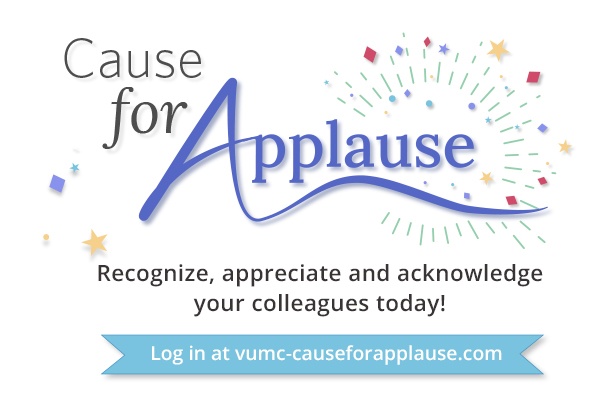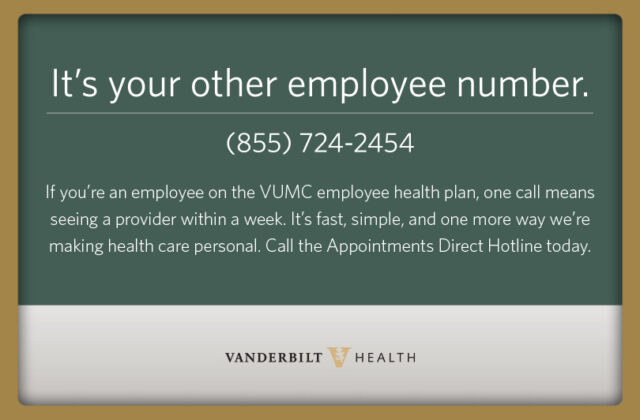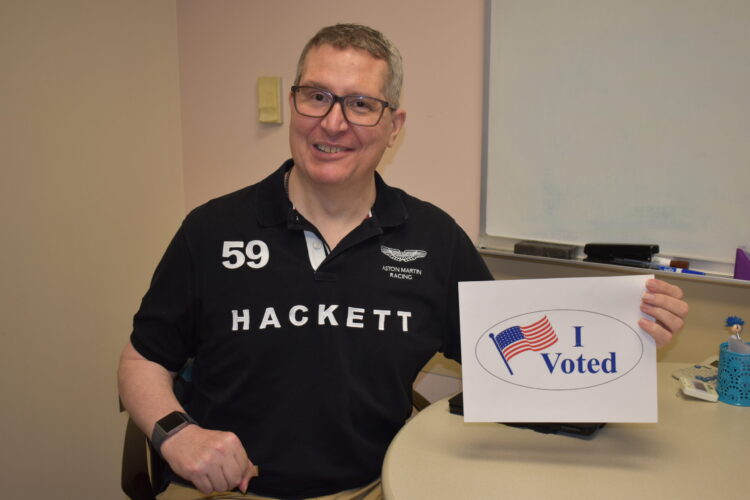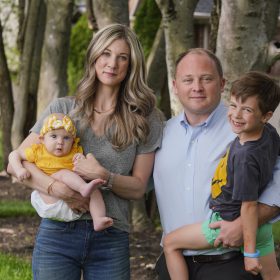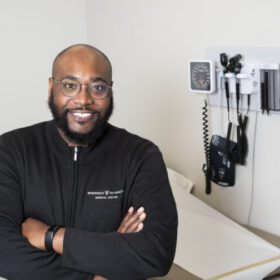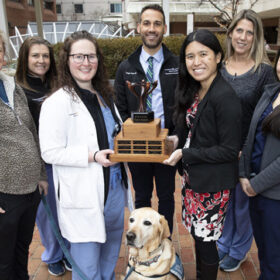A stroke left Kate Adamson trapped in her body, unable to communicate. Here’s how she recovered and became a VUMC social worker.
"You can see and hear everything around you, but you appear dead. It is like being locked in a glass coffin.”
October 31, 2023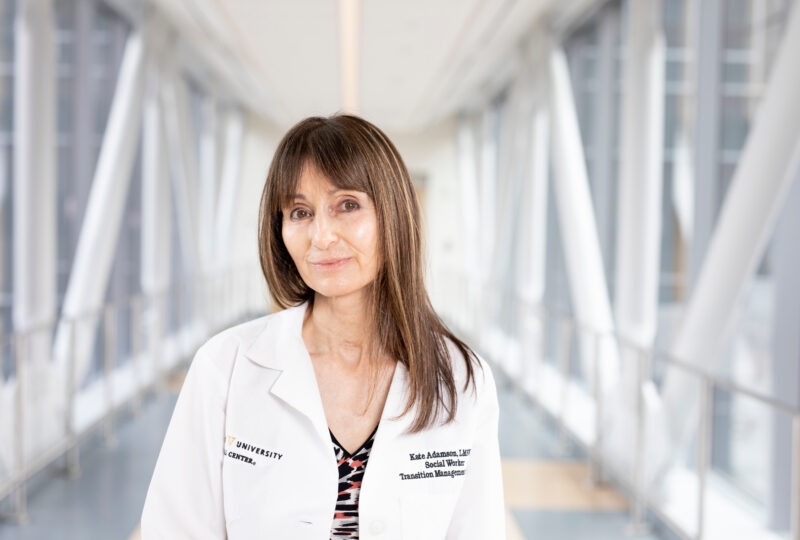
Kate Adamson. Photo by Susan Urmy.
In 1995, Kate Adamson, an otherwise healthy, 33-year-old mother of two small children from Los Angeles, suffered a massive brainstem stroke that left her unable to breathe on her own, speak, or move any part of her body except her eyes.
Adamson, who eventually recovered and today is a licensed medical social worker at Vanderbilt University Medical Center, related her experience Oct. 18 during the monthly “Bedside Matters,” an online forum for front-line VUMC health care providers.
“I was trapped in my body,” she said, “totally aware of everything going on around me … I just couldn’t communicate … You can see and hear everything around you, but you appear dead. It is like being locked in a glass coffin.”
This was one of the key messages for clinical staff attending the Bedside Matters forum—don’t assume your patient is not listening.
Adamson experienced what is called “locked-in syndrome,” an infrequent consequence of stroke that results in near-total paralysis, said Derek Riebau, MD, associate professor of Neurology and medical director of the Stroke Program at VUMC.
In Adamson’s case, the stroke was likely caused by a tear in the lining of a blood vessel in the neck, resulting in a blood clot that went downstream into the basilar artery and cut off the blood supply to part of the brainstem.
While in intensive care, her husband discovered that she could communicate by blinking her eyelids: one blink for “yes” and two blinks for “no.” A sign he posted above her bed informed the clinical staff that although she appeared unresponsive, she could hear everything they said.
This was one of the key messages for clinical staff attending the Bedside Matters forum—don’t assume your patient is not listening.
During their initial examination of a patient who appears to be unresponsive or comatose, neurology residents at VUMC are trained to instruct the patient to look up and down. In locked-in syndrome, this may be the only intact volitional movement, Riebau said.
If patients can comply, and look up and down, “they are awake and alert,” he added.
Eventually Adamson was able to form sentences by laboriously blinking out letters from an alphabet chart. Terrified by not knowing whether she would ever be herself again, she remembers blinking, “Am I going to die?”
Yet she never gave up hope. She leaned on her faith, drew strength from her family and visitors, and relied on the team of professionals who cared for her. After 70 days in the ICU, she was transferred to an intensive rehabilitation facility.
That’s where she met a licensed clinical social worker named Amy Madnick. “She is my rock,” Adamson said.
Madnick, who joined the forum by video conference call from Los Angeles, had never had a patient with locked-in syndrome. She had long conversations with family members to try to understand what Adamson needed to help her recover from the stroke.
On their first meeting, Madnick remembers thinking how vulnerable Adamson was. “I just looked at you and thought, ‘We have to figure out how to remind you who you are, and to somehow connect you with those children.’”
Bringing the children into their mother’s therapy was paramount to her recovery, Madnick said. “We have to find what is motivating for each patient, and you happened to be a very motivated person,” she said. “You have such a strong will, but when you came to us, it was pretty broken.”
“When I got out of hospital, right away I started volunteering. I started a stroke support group … My recovery over the years has become about helping other people.”
Social workers are trained not to divulge too much of their personal lives to their patients, but Madnick shared that she also had young children. “It gave us something to have a rapport about,” she said. “There was a purpose to it.”
“That was big for me,” Adamson agreed. “She treated me like a person.”
As Adamson gradually regained the use of her right hand, Madnick encouraged her to keep a journal. It eventually would become a book titled “Paralyzed but not Powerless.”
After three months, Adamson was discharged from the facility and sent home in a wheelchair. But she refused to stop there. “When I was in rehab, … I knew that I wanted to make a difference in other people’s lives,” she said. “It had to be something bigger than me …
“One of the biggest things for me in my recovery was getting out of myself,” she said. “When I got out of hospital, right away I started volunteering. I started a stroke support group … My recovery over the years has become about helping other people.”
Adamson has hemiplegia, weakness on the left side of her body, and uses an ankle foot orthotic device and a cane to walk. But that hasn’t stopped her from advocating on behalf of people recovering from stroke.
“I still deal with the challenges of my disability, so I have an intimate knowledge of what it is like to overcome those unique challenges.”
Her advocacy has taken her from the boardrooms of Fortune 500 corporations and national organizations including the American Heart Association and American Stroke Association to the halls of the U.S. Congress.
Eventually she returned to college. Inspired by Madnick, in 2018 she earned her master’s degree in social work. Two years later, she followed her daughters to Nashville. She has been at VUMC since January 2022.
“I still deal with the challenges of my disability,” Adamson has posted on her LinkedIn page, “so I have an intimate knowledge of what it is like to overcome those unique challenges. Now, with my additional educational skills and credits, I am able to be even more effective.”
Bedside Matters covers a wide range of clinical topics across the Medical Center. To suggest a topic or volunteer for a panel discussion, contact Walter Merrill, MD, professor of Cardiac Surgery who organizes the forum, at walter.h.merrill@vumc.org.




